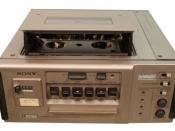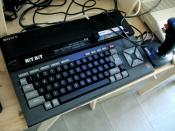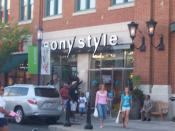Q2. Consider a hypothetical case where Sony was to charge $9,000 for its new 1270 'super data' projector (assuming that 1270's marginal cost is much lesser than $9000). Do you think that Sony can merge the data and the video segments (in other words, it will attract a good chunk of customers, typically >30-40% of the share, in each of the two segments) if it was to charge the $9,000 price for 1270? Give reasons for your answer. Next, consider the hypothetical case where Sony was to charge $15,000 for the 1270 projector. Do you think Sony would be able to merge the data and the graphics segments if it was to charge the $15,000 price for 1270? Give reasons for your answer.
Hypothetical case 1: Sony to sell 1270 for $9,000 in data and video segment
In 1989, Barco had its BD600S, with scan rate of 16 KHz and priced at $9,000, in the video segment.
With Sony's products priced average 15% below Barco's, Sony's existing model in video segment would have been about $7,650. Similarly, in the data segment Barco was selling BD600, with scan rate of 16-45 KHz and priced at $12,000, and Sony's projector would be expected to be priced at about $10,200.
In the video segment consumers do not value additional scan rate as much and hence most will not be willing to pay an extra $1,350 ($9,000-$7,650) for a scan rate of 75 KHz. They would prefer a 16 KHz projector (optimum for video) for $7,650 over a 75 KHz projector (much higher than required for video) for $9,000. Merging is possible only if consumers in video segment are willing to trade up and purchase the new projector with 75 KHz for $9,000. Also, Sony has an existing market share...


